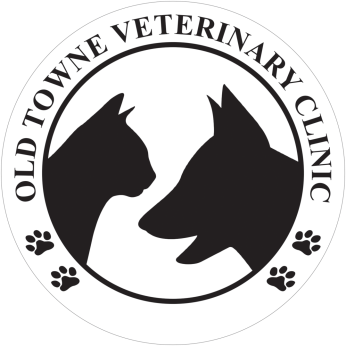First Aid for Dogs: Shock, Rescue Breathing, and CPR
 Medical emergencies occur suddenly and without warning. It is important for dog owners to have a basic understanding of common veterinary emergencies and basic first aid for their pets. While no one can be prepared for all emergencies, there are some simple guidelines and things to look for if your dog seems ill or is involved in an accident.
Medical emergencies occur suddenly and without warning. It is important for dog owners to have a basic understanding of common veterinary emergencies and basic first aid for their pets. While no one can be prepared for all emergencies, there are some simple guidelines and things to look for if your dog seems ill or is involved in an accident.
What is first aid?
First aid is the initial treatment given in a medical emergency. Its purpose is to preserve life, reduce pain and discomfort, and minimize risk of permanent disability or disfigurement.
In an emergency, what should I do first?
- Keep calm and assess the scene for any additional threats to you or your pet. This step is important for everyone’s safety.
- Keep your dog warm (except in the case of heat stroke), as quiet as possible, and move them as little as possible, especially if there is possible trauma, broken limbs, or any neurological symptoms.
- Contact your veterinary hospital to inform them of the situation and get specific first aid advice.
- To safely move or transport an injured dog, get somebody to help you. Carefully maneuver your dog onto a blanket or coat so you can gently move them.
- For a small dog, use a suitable container, such as a strong cardboard box or a carrier. Remove the top of the carrier for easy and safe access; DO NOT push an injured dog through the small door or opening.
- For a larger dog, make a stretcher from some rigid material such as an appropriate-sized, sturdy piece of wood.
- Get to a veterinary hospital as soon as possible.
How can I restrain or calm an injured dog?
Most injured animals will be panicked and/or disoriented. The stress of an emergency can cause an otherwise friendly animal to act aggressively. Although most panicky dogs respond to a calm, soothing voice, use caution when approaching or touching any injured animal. It is important to ensure the safety of all rescue personnel attempting to assist an injured animal.
Some types of restraint that can ensure the safety of both dogs and humans include:
Muzzling: You can create a muzzle out of a leash, belt, necktie, sock, rope, or strap. Loop the cord around your dog’s muzzle (mouth) and tighten it to prevent biting. Dogs have only one muscle to open their jaw, so once the jaw is closed, it is relatively easy to hold it safely shut. Dogs can breathe through their nostrils unless the nose is injured or obstructed.
Wrapping: You can wrap the body of an unmanageable dog in a blanket or towel. Be sure to keep his head exposed and do not constrict the trachea.
Immobilizing: If you are suspicious of spinal injury, lay your dog on a board and secure him on the board with straps or cords. Try to keep the head and neck immobilized.
What is shock?
Shock is a complex, systemic (whole-body) reaction to an emergency situation, such as severe trauma, blood loss, heart failure, and other causes of decreased circulation (e.g., severe and sudden allergic reaction and heat stroke). A life-threatening drop in blood pressure is a dangerous part of shock. If not treated quickly and effectively, systemic shock may cause irreversible injury to body cells and can be fatal.
What are the signs of shock?
Clinical signs of systemic shock include rapid breathing and elevated heart rate with pale mucous membranes (gums, lips, and under the eyelids). Your dog’s feet or ears may feel cold, and he may vomit or shiver. As shock progresses, most pets become quiet and unresponsive.
What should I do if my dog is showing signs of shock?
Keep your dog as quiet as possible and try to conserve heat by covering them with blankets, towels, or even newspapers. Follow the A-B-Cs of first aid:
A: Airway
B: Breathing
C: Cardiac function
Airway: Anything that obstructs the airway prevents oxygen from entering the lungs. Do your best to clear the mouth and throat of any obstruction (e.g., vomit, saliva, or foreign bodies such as grass, sticks, or balls). Be careful — your dog may bite you in panic.
Breathing: If your dog is unconscious and does not appear to be breathing, try gently pumping the chest with the palm of your hand, while feeling just behind the elbow to detect a heartbeat or pulse. If unsuccessful, perform rescue breathing (see below). Be careful - injured pets may bite you out of fear. If you are unsure about the health or vaccination status of the injured pet, avoid contact with bodily fluids and blood.
Cardiac function: If you can’t detect a heartbeat or pulse, or if it feels weak and slow, try pressing on the chest with your palm and elevating the lower half of the body to promote blood flow to the brain. Follow the CPR steps below.
How do I perform rescue breathing for my dog?
If your dog is unresponsive, ensure there is an open airway.
- Carefully pull the tongue out of the mouth.
- Extend the head and neck so that they are in a straight line. DO NOT overextend the neck if your dog has obvious head and neck trauma.
- Carefully clear the mouth of any debris that may be obstructing breathing.
- Place your hand over your dog’s muzzle while holding the mouth shut and extend the neck. For small dogs, you can sometimes use a Styrofoam cup or similar item over the dog’s face. Poke a large hole in the bottom of the cup for you to breathe through, and put the opening over your dog’s face. Ensure a relatively tight seal around the muzzle.
- Blowing into the nostrils, give three to five breaths and watch for the chest to rise. If you do not see a rise in the chest, reposition the neck or search for airway obstruction. For rescue breathing, provide 10 breaths per minute.
- If you see an obstruction but cannot remove it, and your dog is unconscious, you can attempt XXT (the eXternal eXtraction Technique). This technique is gentler than the Heimlich maneuver and is useful in cases where there is a ball stuck at the entrance of the trachea.
- Lay your dog on his back, on the floor, and straddle his body. Position his head and trachea parallel to the floor.
- You will feel larger objects in the throat area, just behind the bone of the lower jaw (mandible). Use your fingers to press down on the lower jaw, keeping the neck straight and the head stable and on the floor.
- Use your thumbs to “milk” the obstruction with a “J-stroke” downwards and toward the nose.
- If you believe there is an airway obstruction that you cannot see, you can attempt a modified Heimlich maneuver on your dog to attempt a forceful expulsion of an obstruction.
- If your dog is standing, stand or kneel over and behind your dog. Place your hands under the dog’s body, just behind the ribs, and thrust them quickly upwards and forwards.
- If your dog is lying down, use one hand on his back and the other hand to squeeze the belly upwards and forwards.
- Smaller dogs can be gently picked up by their thighs and swung side to side. If the obstruction persists, you can apply pressure just behind the rib cage, in a forward motion.
- If your dog fails to breathe on his own, you may attempt an acupressure maneuver. Press firmly with your fingernail or another hard, dull object in the space just beneath the nose on the upper lip (nasal philtrum). Maintain the pressure for 10 – 30 seconds.
What if my dog requires CPR?
If there are still no obvious signs of life after you have established an airway and begun rescue breathing, you should attempt chest compressions.
- Make sure there is no major bleeding. If there is bleeding, have an assistant manage the bleeding while you perform CPR.
- If possible, lay your dog on his right side.
- Feel for a heartbeat or femoral pulse. The femoral pulse is located inside the leg in the groin region. A cat’s neck pulse is not easy to feel.
- Bend the left forearm and note the location where the elbow touches the chest. This is close to the middle of the rib cage.
- Placing one hand on each side of the chest in the middle of the rib cage, vigorously compress the chest 100–120 times per minute. For small dogs (under 10 pounds), use one hand to compress the chest from both sides by putting your fingers on one side and your thumb on the other side of the chest. The rate should be about 30 compressions for every 2 breaths.
- Try to compress the chest wall at least 30% – 50%, which is about 1 inch (2 cm) in small dogs and 2 to 3 inches (5 – 8 cm) in larger dogs.
Is there anything else I should know?
After being involved in an emergency or accident, it is important to take your dog for a veterinary examination as soon as possible, even if he appears to have recovered fully.
© Copyright 2025 LifeLearn Inc. Used and/or modified with permission under license. This content written by LifeLearn Animal Health (LifeLearn Inc.) is licensed to this practice for the personal use of our clients. Any copying, printing or further distribution is prohibited without the express written consent of LifeLearn. This content does not contain all available information for any referenced medications and has not been reviewed by the FDA Center for Veterinary Medicine, or Health Canada Veterinary Drugs Directorate. This content may help answer commonly asked questions, but is not a substitute for medical advice, or a proper consultation and/or clinical examination of your pet by a veterinarian. Please contact your veterinarian if you have any questions or concerns about your pet’s health. Last updated on Jun 18, 2025.





